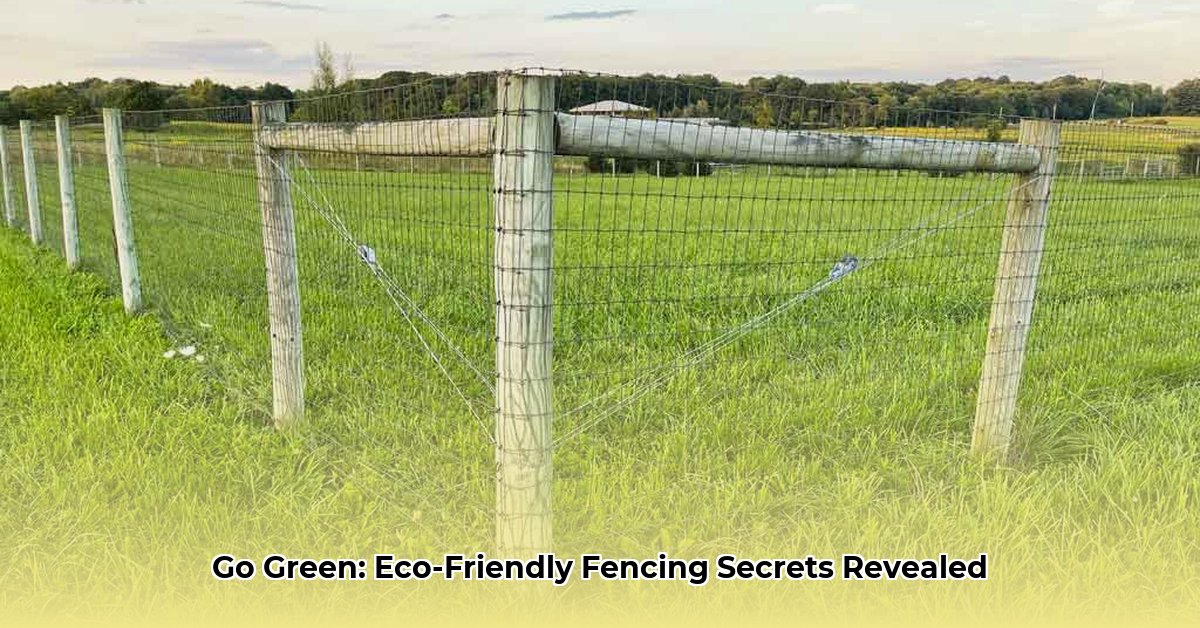
Choosing the right fencing for your horses is a significant decision impacting safety, budget, and environmental responsibility. This guide helps navigate the sustainable fencing options available at Tractor Supply, balancing cost-effectiveness with long-term environmental impact. We'll explore materials, installation, and maintenance, empowering you to make informed choices.
Understanding Sustainable Horse Fencing
Sustainable horse fencing minimizes environmental impact throughout its lifecycle. This includes considering raw materials, manufacturing processes, longevity, and end-of-life disposal. It's about reducing your horse's overall environmental footprint. A truly sustainable approach often necessitates a holistic review of the materials chosen and the methods employed.
Tractor Supply Fencing Material Options: A Comparative Analysis
Tractor Supply offers various fencing materials, each with unique environmental and economic considerations. Let’s analyze the key choices:
Wood: A traditional choice, readily available, and often affordable. However, wood requires regular maintenance (staining, repairs), eventually needing replacement, generating waste. Sustainable sourcing (responsibly managed forests) is crucial.
Wire: Durable and long-lasting, but its production is energy-intensive and relies on metal resources. Galvanized wire is preferable due to its rust resistance, extending its lifespan and reducing waste. Recycling old wire is also a responsible practice.
Vinyl: Popular due to its low maintenance and durability. Yet its production is energy-intensive, and recyclability remains limited. Opt for vinyl containing recycled content to lower its environmental impact.
Recycled Plastic: An excellent eco-friendly option, made from recycled materials, offering durability with a smaller environmental footprint compared to other choices. However, initial cost can be higher.
| Material | Advantages | Disadvantages | Sustainability Considerations |
|---|---|---|---|
| Wood | Renewable (sustainably sourced), natural aesthetic | Requires frequent maintenance, shorter lifespan, waste generation | Source sustainably; dispose responsibly. |
| Wire | Strong, long-lasting | Energy-intensive production, potential for rust | Choose galvanized; recycle when possible. |
| Vinyl | Low maintenance, durable | Energy-intensive production, limited recyclability | Select recycled-content options; dispose properly. |
| Recycled Plastic | Durable, low-maintenance, reduced environmental impact | Potentially higher initial cost | Verify the percentage of recycled material used. |
Building a Cost-Effective and Durable Fence
While high-quality fencing may seem more expensive upfront, it pays off long-term. Frequent fence replacements are costly and environmentally wasteful. Proper installation is crucial for longevity and minimizing materials waste. Consider your land's topography and local climate for optimal design and material selection.
Expanding Sustainable Horsekeeping Practices
Sustainable horsekeeping extends beyond fencing. Rotational grazing – moving horses to different pastures regularly – prevents soil erosion and promotes pasture health. Healthy pastures support happy horses and a healthier environment. Doesn't a thriving pasture contribute to a reduced environmental impact?
Actionable Steps for Eco-Friendly Fencing
Follow these steps to implement sustainable fencing practices:
- Conduct Thorough Research: Compare Tractor Supply's fencing options, considering their entire lifecycle impact.
- Meticulous Planning: Design your fence efficiently to minimize waste.
- Expert Installation: Proper installation is essential for longevity; seek help if needed.
- Consistent Maintenance: Regular checks and repairs extend lifespan and reduce waste.
Choosing sustainable fencing involves careful consideration, balancing material characteristics, budget, and environmental responsibility. By selecting durable, eco-friendly materials and implementing sound land management, you build a healthier environment for your horses and the planet. Your decisions matter – make them count!
Key Considerations for Sustainable Livestock Fencing
Key Takeaways:
- Sustainable fencing prioritizes durability, budget, and environmental impact.
- Material selection considers livestock type, budget, climate, and local environment.
- A phased implementation approach integrates land management practices for maximized impact.
- Prioritize recycled or locally sourced materials for enhanced sustainability and cost-effectiveness.
- Regular maintenance is crucial to extend fence life, minimizing waste generation.
"Choosing the right fencing is a long-term investment," states Dr. Emily Carter, Professor of Agricultural Sustainability at the University of California, Davis. "It's about finding the balance between immediate cost and the long-term environmental and economic consequences."
Remember, long-lasting, sustainable fencing is an investment in the future of your horses and the planet.